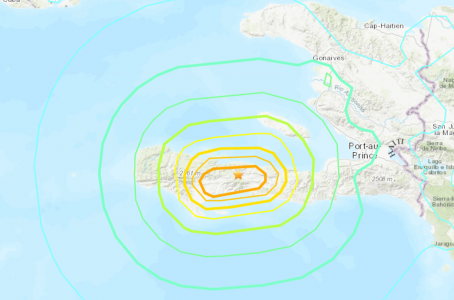Widgetized Section
Go to Admin » Appearance » Widgets » and move Gabfire Widget: Social into that MastheadOverlay zone
Disaster Donations: Frozen Lasagnas and Fur Coats
The views expressed are those of the author and do not necessarily reflect the views of ASPA as an organization.
By Anthony Buller
August 22, 2021

Haiti Earthquake 2010: The container of unsolicited donations sat in the Haitian sun for 17 days. It spent longer than that on its journey from the United States. Its mere presence in Haiti was a nuisance as it clogged transportation at the docks, taking valuable space away from critical emergency supplies. The contents were known to be near-useless despite being the best intentions of churches across America. To make matters worse, the container held once-frozen lasagnas among the faux fur coats and old clothes from peoples’ closets. We’ll never know who decided that they should stack those lasagnas in with the furs for the weeks-long trip to the devastated country, but we must assume that they didn’t think of the sun while doing so.
Haiti Earthquake 2021: Not much has changed. People will still collect stuff and send it along at exorbitant transportation expense. People and their institutions will do canned food drives and donate their favorite soup. Never mind that the money spent on buying, collecting, shipping and distributing that can of soup could buy a week’s worth of rice and beans, a more appropriate staple in country.
I spent more than five years as a full-time voluntary agency liaison for the Federal Emergency Management Agency (FEMA). This role includes the responsibility for donations management. I worked the 2010 Haiti Earthquake and tried to stem the tide of worthless stuff from the United States. The following lessons from then are just as relevant today.
Cash is king. A reputable humanitarian organization can leverage your dollar so much better than that can of Chunky Soup. As mentioned above, money to buy the right things (e.g. appropriate foods) stretches to meet more needs more appropriately. Imagine how many boxes of macaroni and cheese mix get sent to disasters. Trust me, people don’t deserve an aid item that also requires clean water, a pot, a spoon, a colander, milk and butter. The same logic applies to materials. Better to equip an aid organization with the finances to deliver commodities and services that are meaningful and appropriate to the situation.
Unsolicited donations create a second disaster. As described above, pushing products to a disaster site creates more trouble than it can ever be worth. Yes, sometimes we see people on television or social media saying, “Send us everything.” You can be generous with stuff, but turn the arrow around and find a reputable agency that can identify what the needs are. This is called changing it from a push to a pull. Solicited donations, supporting humanitarian organizations, generally do not create the havoc of unsolicited stuff as that organization bears responsibility for managing the donations they asked for.
Volunteering time. Self-deploying to a disaster is not a good idea. You are likely to take resources away from those with needs and also interfere with more legitimate and efficient service delivery. That said, signing up to help through humanitarian organizations can be a great way to serve survivors. That organization will help with coordination, training, equipping, identifying needs and delivering services.
A note about timing: people give while the attention is high. That’s perfectly normal. But note that the short and long-term recovery needs (called reconstruction overseas) continue for years. Consider giving to organizations that invest in the long-term as well as the immediate needs.
But how do you know what organization to help? This couldn’t be easier today so long as you have a little common sense. A simple Google search of, “Help for Haiti earthquake,” yields many reputable results. If you want to donate to United Nations Crisis Relief you can go to crisisrelief.un.org/crises and find the Haiti Earthquake Appeal.
Just please don’t send any lasagnas.
Author: Anthony Buller has deployed to more than 40 presidentially declared major disasters and emergencies in his 17 years of federal service. He leads a team of emergency management professionals covering the western US for a federal agency. He can be reached at: [email protected].


Hillary Knepper
August 23, 2021 at 4:49 pm
This is a terrific article- concise, informative, with a call to action. Thank you!